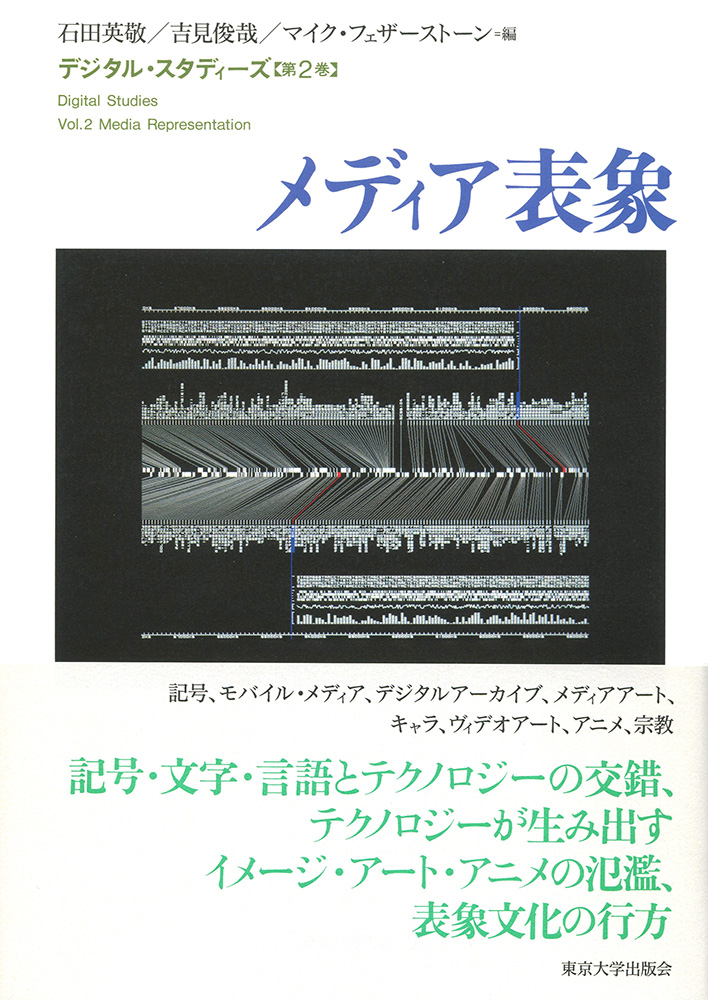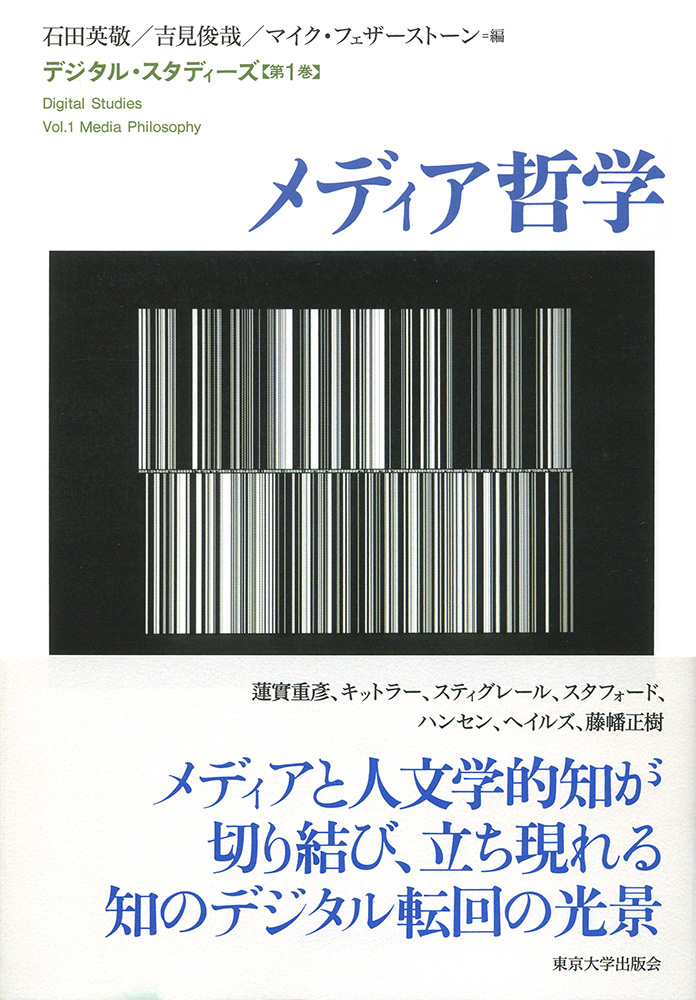
Title
Digital Studies 2 Media HyōShō (Media Representation)
Size
328 pages, A5 format
Language
Japanese
Released
September 09, 2015
ISBN
978-4-13-014142-0
Published by
University of Tokyo Press
Book Info
See Book Availability at Library
Japanese Page
The digital revolution transformed all types of media into matrices of 0s and 1s generating messages. Thereafter, media itself has evolved into a protean platform that controls its relationship with beings—people and things, and whose hypertext principles change continuously through interaction. Digital media serve as a platform for the autonomous creation of all manner of relationships, are an unlimited storehouse of memories, are programs that predetermine people’s behavior, and are capable of summoning people and things from anywhere and at any time. It compiles all knowledge and things encyclopedically and projects the entire universe through communication among all entities, each from their own viewpoint, by means of information terminals that function as monads as defined in Leibniz’s metaphysics. One could go so far as to say that digital media is on the road to fulfilling the metaphysical organizing of the world's information.
The paradigm shift brought about by the digital revolution requires us to reevaluate our concepts of people and culture and, more specifically, our concepts of “time” (real time), “place” (ubiquity), “people” (post-humanism), “memory” (archive), and “narratives” and “representation” (media and culture) within a knowledge landscape that is radically different from that of the past.
Taking the concept of “digitalization of knowledge” defined in Digital Studies 1: Media Philosophy, this book attempts to identify a theoretical paradigm for understanding digital culture. Digital Studies 2: Media Representation explores basic theories regarding symbols, writing systems, images, and media brought about by digital technology, attempts to decipher the effects of representation that occur at the interface with digital media, and presents a future outlook of aesthetic experience and the new culture of representation that is rising in prominence.
The authors of this volume approach the topic of media by asking what role “letters” play in the creation of media. Although 20th century media studies broke ground for understanding media in terms of communication, language, and symbols, when seeking a foundational theory of media, the question of “writing systems,” which lies at the root of the intersection between “technology” and “language” or “representation”—i.e., the point where the “hand” and “mind” converge in human evolution cannot be avoided. What is needed is grammatological consideration of media.
This volume assembles a new generation of enthusiastic researchers from around the world and shines a spotlight research on media representation in the context of digital studies related to themes such as grammatology and technology, writing systems and archiving of technology, digital interface and media knowledge, tactile media and indicator media, digital art, digital esthetics, popular culture, and popular religion.
(Written by Hidetaka Ishida, Professor, Interfaculty Initiative in Information Studies / 2018)



 Find a book
Find a book





